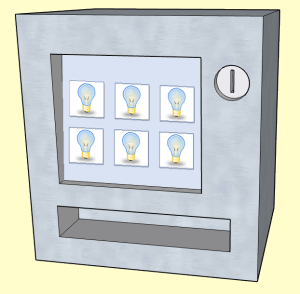In his latest presentation, Stephen Downes again explained personalized learning. It occurred to me that the problem with this is very similar to what I don’t like about the current trend with personal productivity tools, such as some new note-taking apps:
There is a service interface. There is a system that interacts with you, not a helping tool that you can wield like a hammer.
It feels both pampering and patronizing, and more ‘push’ than ‘pull’. By Krakauer’s terms, the service is competitive (prosthesis) rather than complementary (real tool).
Sure, you need to contribute and enter stuff yourself. But the expectation is that the system will optimze it for you. For example, some note-taking systems will be generating automatic ‘serendipitous’ backlinks of your hoarded notes, as an ‘idea factory’ that makes you more productive and saves you effort.
Similarly, interactive textbooks do require your input, but the interactivity is typically confined to a sequence of requests and response presentations, with reading separated from writing, rather than ‘collaboratively’ creating an artifact for insight which would be possible, for example, by flexible mapping and annotation.
The predefined optimized service interface separates the system like an independent actor, whose contribution is perceived as a separate unit of independent work.
And such a system creates and reinforces expectations, and eventually an attitude of entitlement to get some turbo results with less efforts. This prospect is, of course, more sexy than my think tool which works more like a hammer (i.e. you have to do the thinking yourself). Similarly, Downes’s self-directed personal learning might be seen as less attractive than personalized learning?

I wonder if there is also a difference between paid learning and free learning involved. Does the paying impact the expectation of more effortless, more turbo learning? When I was at school, we belittled the few private grammar schools as something for the stupid among the rich. So, Jan Blommaert’s summary resonates a lot with me:
“I grew up and studied in the welfare-state educational system of Belgium, […] I’m very much a product of a big and structural collective effort performed by people who did not know me – taxpayers”
Today, of course, much has changed also over here in Germany. Maybe “Taking Ownership of Their Learning” (as in the presentation title) is unattractive when someone already feels “owning” it because it was paid for?


Asi es, el aprendizaje personal (individualizado) es de una sola vía, no hay interacción, mientras que el personalizado es lo que tu das y también lo que tu recibes, por tanto interacción asegurada.
Juan Domingo Farnos
LikeLike
Thanks Juan for your visit and for sharing your perspective.
LikeLike
Thanks to Stephen Downes for the comment https://www.downes.ca/post/71220
LikeLike